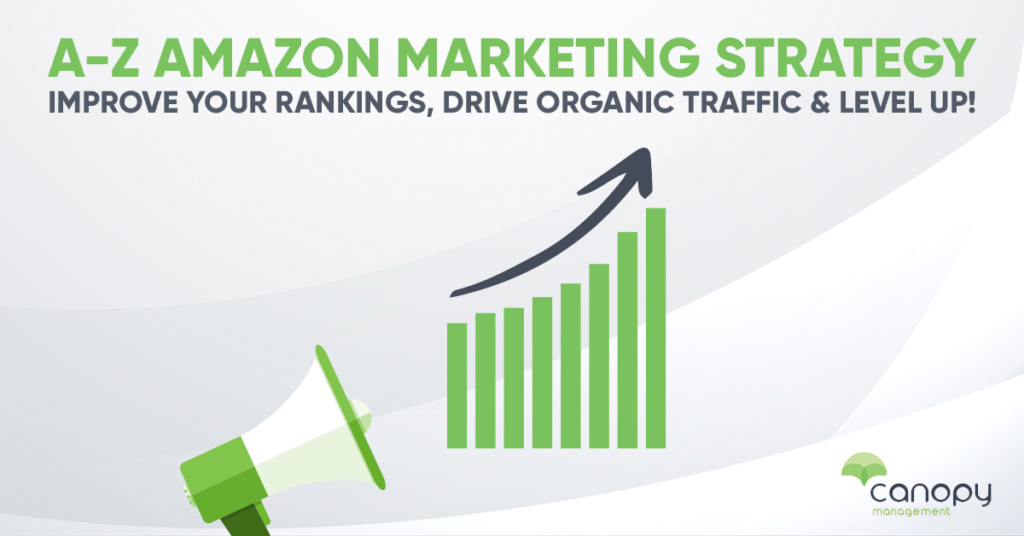The Essential Guide to Optimizing Your Amazon Listing for Mobile Devices
Your Amazon success has a lot to do with the device you’re probably holding in your hand. Here’s why having a mobile-friendly product listing is critical!

It’s a simple fact that shopping on Amazon’s marketplace is very different on a mobile device.
When combined with our increased dependence on artificial intelligence and complicated ecommerce algorithms, understanding the role that our smartphone plays in an overall optimization strategy is critical.
That’s because inferior Amazon listing optimization leads to a poor user experience and negative feedback. That drives away potential customers.
To make sure that’s not the case with your own Amazon product listings, this post addresses best practices for optimizing your Amazon listing for mobile devices.
Why is it Important to Optimize Your Product Listing for Amazon Mobile SEO?
Statista reports that as of the third quarter of 2024, smartphones constituted around 77% of retail site traffic globally, and were responsible for 68% of all online shopping orders.
Amazon’s own shopping app has over 197 million monthly active users. Combined with the steadily growing number of shoppers employing live selling strategies – from Amazon as well as your favorite influencer – means that optimizing for mobile SEO should be a first step.
Mobile optimization is no longer a nice-to-have attribute – it’s become a must-have strategy for online businesses; particularly for those spending time navigating Amazon’s Seller Central to optimize Amazon product listings for mobile-first users.
AI is Fueling the Importance of Mobile SEO
Artificial intelligence powers the personalized search results optimized for the smaller screens of mobile devices. For example, if a shopper frequently buys organic skincare products, the mobile app’s search results might prioritize similar products from different sellers
AI also helps streamline A/B testing to refine mobile content, enhances customer support through optimized product details for chatbots, and identifies mobile-specific trends to tailor keywords for better visibility.
At the same time, voice-enabled shopping through Alexa – now integrated with mobile devices – allows users to search, add to cart, and purchase without even touching their phones.

Great Mobile SEO Starts with Keywords
The foundation of Amazon SEO – the process of optimizing product listings on Amazon to improve their visibility and ranking in search results – begins with keyword research.
Relevant keywords mean that you’re aligning with the customer search terms used when shoppers are browsing the platform. Once you’ve done that, a healthy chunk of your work is already done.
Even if you’re able to create a product listing with evocative photos and great descriptions, that’s not going to win you customers if your product doesn’t show up at the top of the page in the first place. That’s why Amazon keyword research is a critical step.
Fortunately, Amazon keyword research tools are able to automate this task. All you need to do is provide a basic seed keyword and the tool will do much of the heavy lifting.
Google’s Keyword Planner, Helium 10, Ahrefs and SEMrush all offer slightly different versions of effective keyword tools. All of them will make sure that you’re working with the right search terms.
How to Optimize Your Amazon Product Listing
First and foremost, it doesn’t make sense to sell on Amazon’s marketplace and not take advantage of the platform’s own mobile optimizations. It’s critical to be sure that you’re using all the features Amazon offers that are mobile-friendly.
A+ Content and Amazon Brand Stores are both designed to look great on mobile devices. They provide a visually appealing and easy-to-navigate experience for users, which can boost conversions significantly for an Amazon seller.
But, that’s just the beginning. Here are six more ways that brand entrepreneurs can make sure that their Amazon product listings are optimized for mobile.

1. Keep the Good Stuff ‘Above the Fold’
Above-the-fold content is a game-changer for Amazon sellers looking to optimize mobile listings. This prime real estate forms the first impression and determines whether shoppers stay or move on. With limited screen space on mobile devices, capturing attention instantly is critical.
Mobile screens are smaller, which means you have less space to describe your products. On mobile, the Amazon product description is displayed directly above and in a block with bullet points.
Strategically optimizing this space can drive higher engagement and conversions, as it’s the most viewed section by potential buyers.
Crucial Details to Include: Ensure price, shipping information, and standout product features are front and center.
Key Information Visibility: Only three bullet points are visible on mobile Amazon listings.
Highlight Essentials: Focus on showcasing the most important product features and benefits in these bullet points.
2. Make the Most of Your Amazon Product Title
An Amazon product title on a mobile screen doesn’t display as many characters as it does on a desktop. While desktops display up to 200 characters, the mobile search result shows fewer than 70. Be sure to use relevant keywords to incorporate the most crucial information – brand name, product type, key feature, size, and color – within this limit.
This way, your customers get the important information without having to click through.

3. Create Memorable Amazon Product Images
Images are critical in the mobile shopping experience. When it comes to Amazon product listing optimization, they are the first thing that catches a viewer’s eye. That can make or break the decision to click on a product.
Unlike the nine images allowed by the desktop view, only the first seven of your product images will be displayed on the mobile product page. Use high-resolution images that clearly display the product.
Ensure your primary image stands out against Amazon’s white background, so it’s easily visible on smaller screens. Include the zoom feature by using images larger than 1000 x 1000 pixels. This lets potential customers see product details on their relatively tiny mobile screens.
- Use lifestyle images to demonstrate the product in action, like a person using a backpack while hiking or drinking coffee from a mug in a cozy living room.
- Showcase close-ups of product details, such as stitching, texture, or features, that might not be apparent in the primary image.
4. Don’t Forget About Video
In today’s mobile-first shopping environment, it’s video content that captures attention and drives engagement, particularly when tailored for on-the-go consumers.
- Create short, engaging videos that highlight product benefits within the first few seconds. Example: A 15-second clip demonstrating how to use a solar lamp for outdoor activities.
- Optimize video resolution for mobile screens (at least 720p) and add subtitles since many mobile users watch videos with the sound off.
5. Make Sure to Optimize for Voice Search
Optimizing for voice search means focusing on incorporating conversational, long-tail keywords into product titles and descriptions. These keywords should reflect how people naturally speak when using voice assistants like Alexa or Siri. For instance, instead of simply listing “coffee mug,” you could use “best double-walled coffee mug for camping” to align with typical voice queries.
Additionally, highlight common phrases or questions users might ask during organic voice searches, such as “find eco-friendly water bottles under $25” or “what’s the best blender for road trips?”
Including these natural, question-based phrases in your content increases the likelihood of your product being featured in voice search results.

6. Amazon Live: A Powerful Tool for Sellers
Amazon Live enables sellers to promote their products through interactive livestreams, engaging customers in real-time on a mobile platform.
The Amazon Live Creator App is free and optimized for mobile devices. Sellers can stream using their phone camera or a professional setup. Livestreams can be launched instantly or scheduled for a later time.
To use Amazon Live, sellers must be U.S. Professional Sellers registered with Amazon Brand Registry.
Features and Benefits include:
- Product Carousel: Showcase up to 40 products during a livestream.
- Real-time Interaction: Use live chat to answer questions and demonstrate products.
- Increased Visibility: Streams appear on Amazon.com/Live, the seller’s store, and product pages.
- Analytics: Access metrics to measure performance and improve future livestreams.
The promotional opportunities are almost endless. They include the ability to offer live-only promotions to boost urgency, new product launches during streams, and cross-promotion of related products in a single session.
The Essential Mobile Optimization Check List
- Conduct keyword research using tools like Google’s Keyword Planner, Helium 10, Ahrefs, or SEMrush.
- Optimize product title: Keep under 70 characters, include brand, type, feature, size, and color.
- Enhance images: Use high-resolution, white background for primary, include lifestyle and detail shots.
- Create short, engaging product videos: Highlight benefits quickly, optimize for mobile, add subtitles.
- Simplify descriptions: Use scannable bullet points, focus on key features and benefits.
- Implement voice search optimization: Use conversational keywords and common phrases or questions.
- Utilize Amazon Live: Set up Creator App, schedule livestreams, showcase products, engage with customers.
- Prioritize “above the fold” content: Highlight essential information in first three visible bullet points.
- Use mobile-friendly features: Take advantage of A+ Content and Amazon Brand Stores.
- Continuously monitor and adapt: Stay updated on consumer behavior and Amazon algorithm changes.

Get a Big Head Start with Amazon Brand Management
Mobile optimization is not a set-it-and-forget-it activity. You need to continuously adapt and optimize your listing as consumer behaviors and Amazon’s algorithm changes.
Because not everyone has the time to constantly stay on top of these changes, Full Service Amazon Management is a path that increasing numbers of successful entrepreneurs have chosen to hit the ground running and then maintain that forward momentum.
Canopy’s experts have their finger on the pulse of ecommerce and are at the front line so that you don’t have to be. Talk to our team about how you can best use next-level Amazon listing optimization to grow your brand online.
Canopy Management is a full-service marketing agency for Amazon, Walmart, and TikTok sellers. Our team consists of multi-million dollar, omni-channel entrepreneurs, industry leaders, and award-winning experts.
Ready to Start Growing Your Amazon Brand?
Canopy’s Partners Achieve an Average 84% Profit Increase!
Find out more


